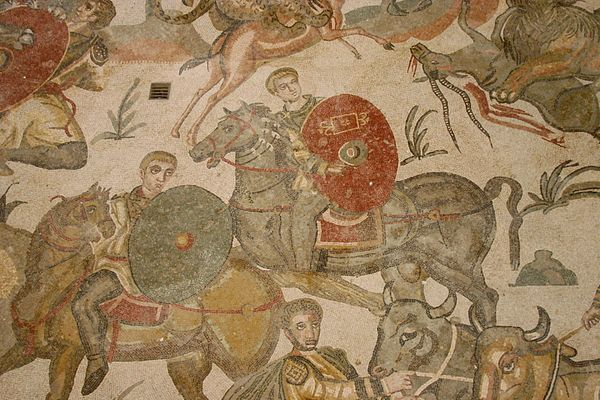The Feudal System

Under the feudal system all land in a kingdom belonged to the king. He parcelled out large chunks to great Lords ("Tennants-in-Chief") in exchange for their military and political support. They parcelled out smaller parcels to lesser lords ("Mesne Tenants") on similar terms. They in turn parcelled out smaller parcels to local lords, who did the same to the peasantry. Thus was formed a hierarchical network below the king of earls, barons, lords of the manor and villains, all bound together by pairs of reciprocal obligations.
The lowest operational unit in this system was the manor, controlled by a lord typically holding the rank of a knight. He lived in a manor house and controlled a large area of land along with its workers. In principal the manorial system and the feudal system are to different things but in Medieval Europe they were closely linked. The system of manorial land tenure was conceived in Western Europe, initially in France but exported to areas affected by Norman expansion during the Middle Ages, for example the Kingdoms of Sicily, Scotland, Jerusalem, and England.
The system had its own vocabulary. The junior party in a feudal arrangement arrangement was known as a vassal. A vassal or liege held land (a "fief") from a lord to whom he paid homage and swore fealty. A vassal was not therefor necessarily a minor figure: everyone in the feudal system below the king was a vassal, even the greatest lords in the land.
King William the Conqueror used feudalism to reward his Norman supporters for their help in the conquest of England. The land belonging to Anglo-Saxon earls was taken and given to Norman Knights and Nobles, split into Manors.
The Medieval Feudal System ensured that everyone owed allegiance to the King and their immediate superior. Everyone was expected to pay for the land by providing certain services in the form of man-days of work. This work could be for farming or military service or both. Military service took the form of so many fighting men (knights, archers, pikemen, etc for so many days per year, including clothing and weapons.
Not all manors were held necessarily by lay lords rendering military service (or cash in lieu) to their superior. A substantial number of manors (estimated by value at 17% in England in 1086) belonged directly to the king. An even greater proportion (in most European states a third to a half) were held by bishops and abbots. Ecclesiastical manors tended to be larger, with a greater villein area than neighbouring lay manors.
Medieval manors varied in size but were typically small holdings of between 1200 - 1800 acres. Every noble had at least one manor; great nobles might have several manors, usually scattered throughout the country; and even the king depended on his many manors for the food supply of the court.
England, during the period following the Norman Conquest, contained more than nine thousand of these manorial estates.
The lord's land was called his "demesne," or domain which he required to support himself and his retinue. The rest of the land of the Manors were allotted to his tenants.
A peasant, instead of having his land in one compact mass, had it split up into a large number of small strips (usually about half an acre each) scattered over the manor, and separated, not by fences or hedges, but by banks of unploughed turf. Besides his holding of farm land each peasant had certain rights over the non-arable land of the manors - the common land.
A peasant could cut a limited amount of hay from the meadow. He could turn so many farm animals including cattle, geese and swine on the waste. He also enjoyed the privilege of taking so much wood from the forest for fuel and building purposes. A peasant's holding, which also included a house in the village, thus formed a self-sufficient unit.
The labour required of villains was called corvée. Work was usually intermittent; typically only a certain number of days' or months' work is required each year. The system differed from chattel slavery in that the worker was not owned outright – being free in various respects other than in the dispensation of his or her labour. In time corvée came to resemble a tax or tribute, as it suited all parties to replace the work by an amount of money or crops or other goods.
The Feudal System included a complex system of rights and obligations. The right to hunt was highly valued by nobles. The severest and cruellest penalties were imposed on "villains" who killed game on the lands owned by a lord.
The Manor House was residential property, and differed from castles in that it was not built for the purpose of attack or defence. The Manor House varied in size, according to the wealth of the lord but generally consisted of a great hall, solar, kitchen, storerooms and servants' quarters.
